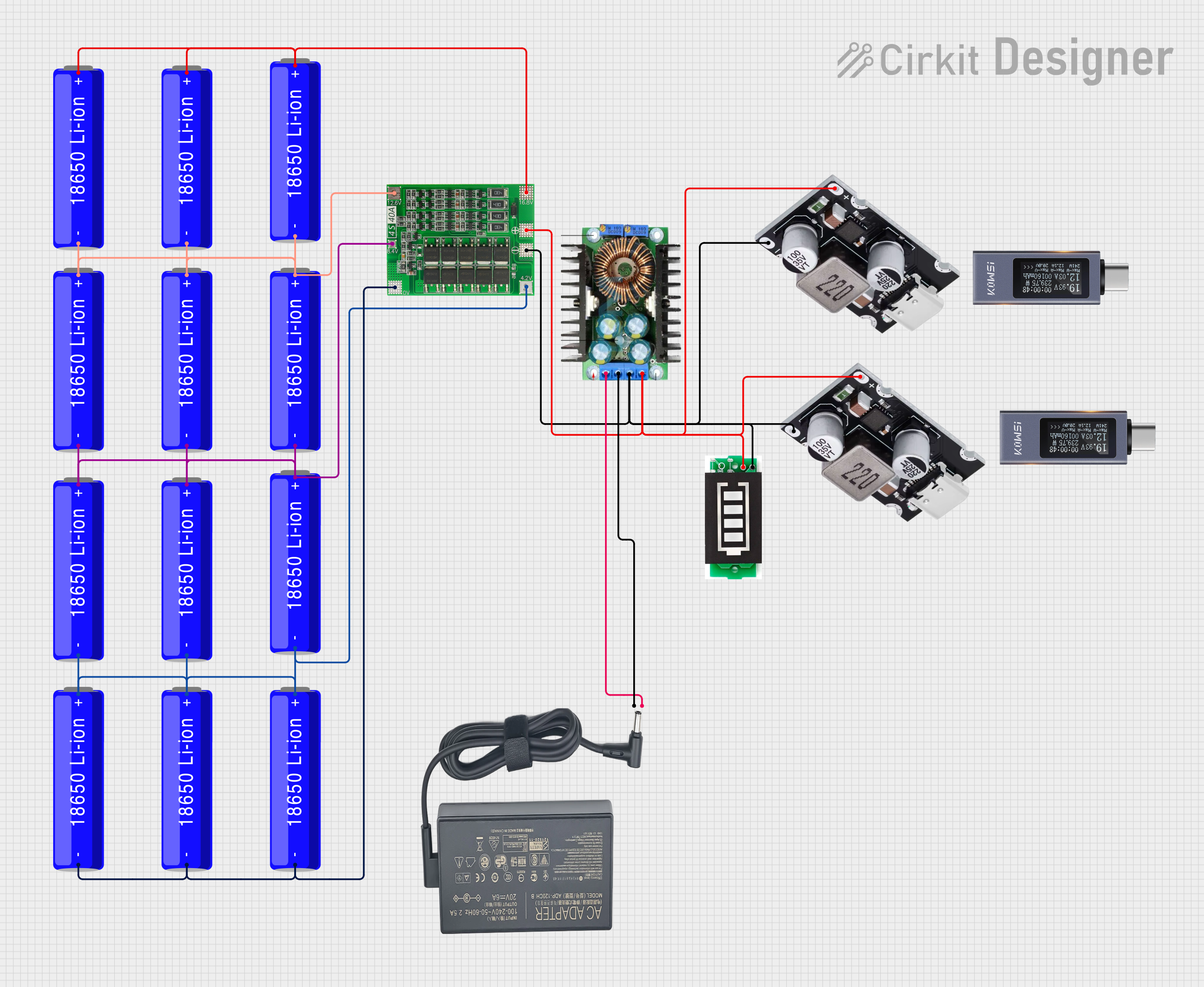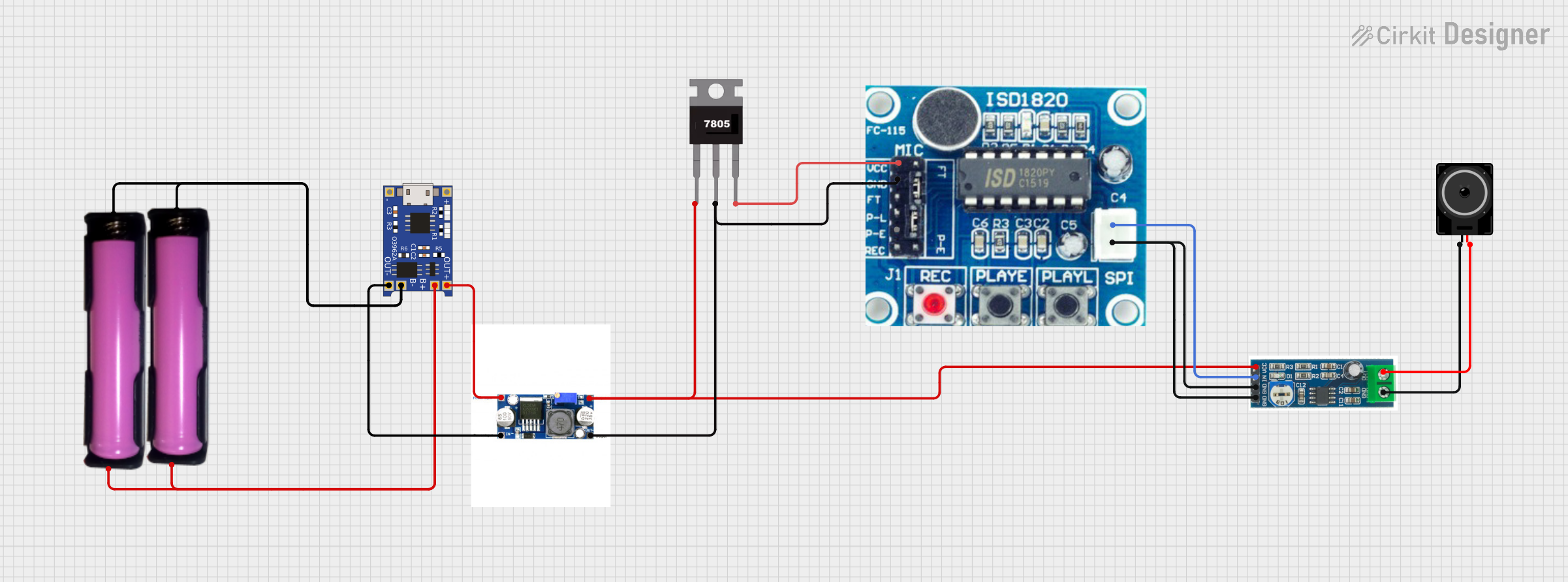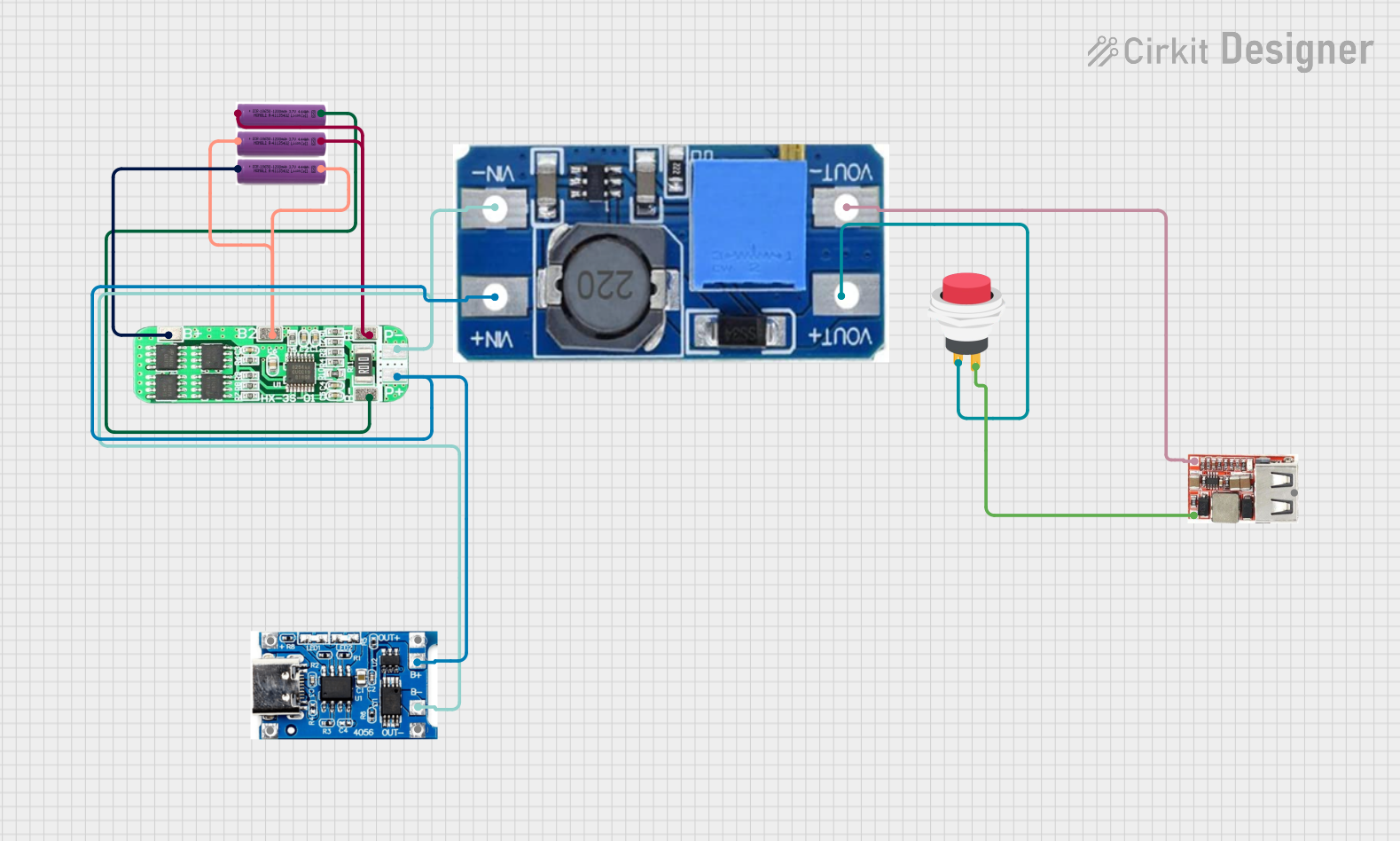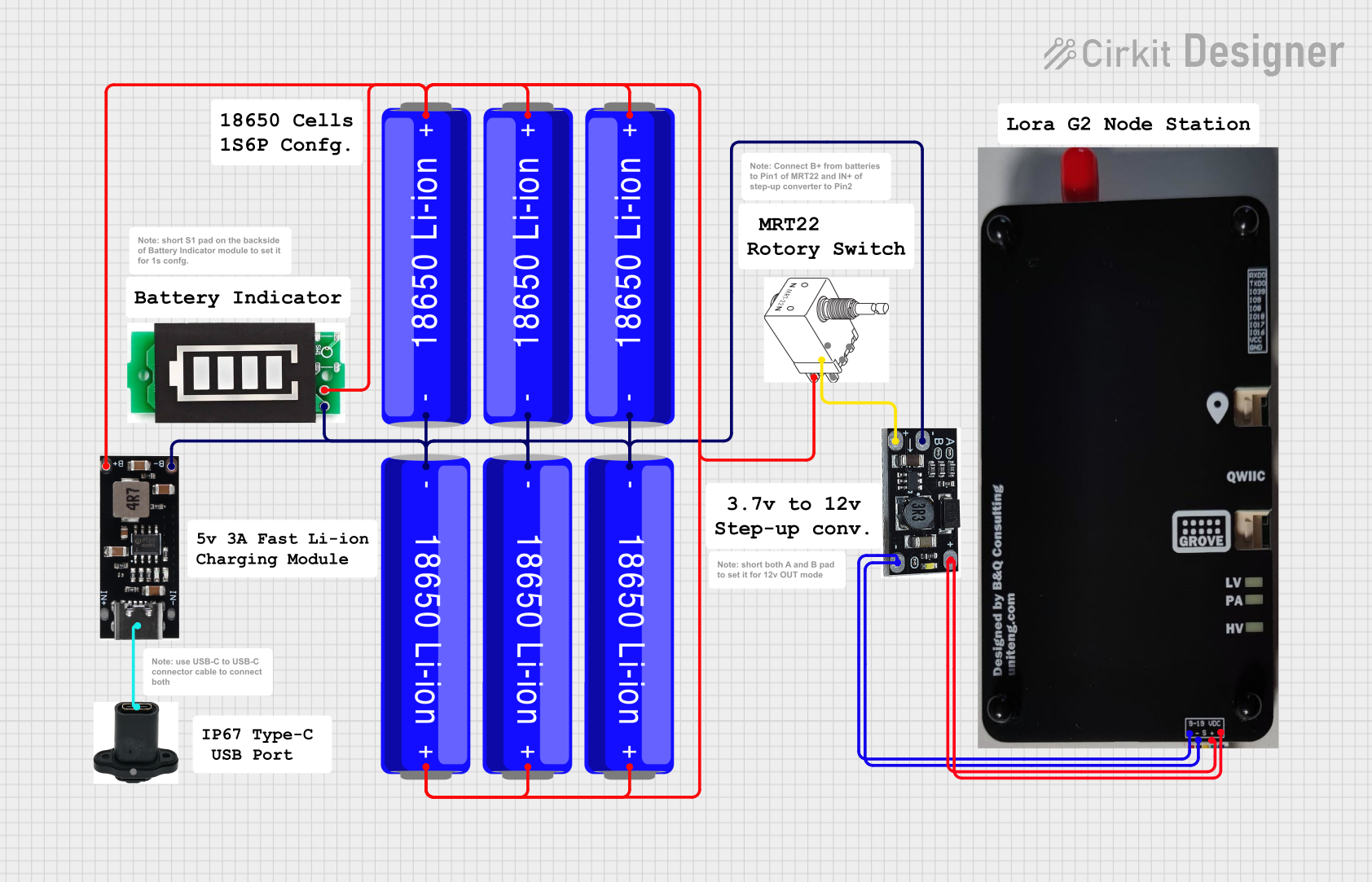
How to Use 18650 LITHIUM ION CHARGER : Examples, Pinouts, and Specs

 Design with 18650 LITHIUM ION CHARGER in Cirkit Designer
Design with 18650 LITHIUM ION CHARGER in Cirkit DesignerIntroduction
The 18650 Lithium Ion Charger is a specialized device designed to charge 18650 lithium-ion batteries, which are cylindrical batteries commonly used in high-drain applications such as laptops, power banks, flashlights, and even in DIY electronics projects. These chargers are engineered to provide a controlled charging process to maximize battery life and safety.
Explore Projects Built with 18650 LITHIUM ION CHARGER

 Open Project in Cirkit Designer
Open Project in Cirkit Designer
 Open Project in Cirkit Designer
Open Project in Cirkit Designer
 Open Project in Cirkit Designer
Open Project in Cirkit Designer
 Open Project in Cirkit Designer
Open Project in Cirkit DesignerExplore Projects Built with 18650 LITHIUM ION CHARGER

 Open Project in Cirkit Designer
Open Project in Cirkit Designer
 Open Project in Cirkit Designer
Open Project in Cirkit Designer
 Open Project in Cirkit Designer
Open Project in Cirkit Designer
 Open Project in Cirkit Designer
Open Project in Cirkit DesignerCommon Applications and Use Cases
- Charging single-cell 18650 lithium-ion batteries for consumer electronics.
- Power source for DIY electronics projects.
- Replacement or standalone charger for devices that utilize 18650 batteries.
Technical Specifications
Key Technical Details
- Input Voltage: Typically 5V (from USB or adapter)
- Charging Voltage: 4.2V (standard for 18650 cells)
- Charging Current: Varies, common values are 500mA, 1A, or 2A
- Battery Chemistry: Lithium-ion
- Battery Size: 18650 cell
- Charging Method: Constant Current/Constant Voltage (CC/CV)
Pin Configuration and Descriptions
| Pin Number | Description | Notes |
|---|---|---|
| 1 | VCC (Power Input) | Connect to 5V power source |
| 2 | GND (Ground) | Connect to system ground |
| 3 | BAT+ (Battery Positive) | Connect to positive terminal of the battery |
| 4 | BAT- (Battery Negative) | Connect to negative terminal of the battery |
| 5 | CHG (Charging Status) | Outputs low when charging |
| 6 | STBY (Standby Status) | Outputs low when not charging |
Usage Instructions
How to Use the Component in a Circuit
- Power Connection: Connect the VCC pin to a 5V power supply and the GND pin to the common ground.
- Battery Connection: Attach the positive terminal of the 18650 battery to the BAT+ pin and the negative terminal to the BAT- pin.
- Status Indicators: Optionally, connect the CHG and STBY pins to LEDs through a current-limiting resistor to indicate charging status and standby mode.
Important Considerations and Best Practices
- Battery Orientation: Ensure the battery is connected with the correct polarity to prevent damage.
- Power Supply: Use a stable 5V power supply capable of supplying sufficient current for the charger.
- Heat Dissipation: Provide adequate ventilation around the charger as it may generate heat during operation.
- Overcharge Protection: The charger should have built-in overcharge protection, but always monitor the charging process.
- Quality of Batteries: Use high-quality 18650 batteries to reduce the risk of leakage or explosion.
Troubleshooting and FAQs
Common Issues Users Might Face
- Battery Not Charging: Check connections, battery polarity, and power supply.
- Charger Overheating: Ensure proper ventilation and check if the charger is not overloaded.
- LED Status Indicators Not Working: Verify the connection of the LEDs and the current-limiting resistors.
Solutions and Tips for Troubleshooting
- Ensure Proper Connections: Double-check all connections for correctness and firmness.
- Monitor Charging Process: Do not leave the battery charging unattended for extended periods.
- Check Battery Health: Replace the battery if it does not hold a charge or shows signs of damage.
FAQs
Q: Can I charge multiple batteries at once? A: This charger is designed for single-cell charging. For multiple batteries, use a charger designed for that purpose or multiple single-cell chargers.
Q: How do I know when the battery is fully charged? A: The CHG LED will turn off or change color, depending on the charger model, indicating the battery is fully charged.
Q: Is it safe to leave the battery in the charger overnight? A: While the charger has overcharge protection, it is generally recommended to unplug the charger once the battery is fully charged.
Example Code for Arduino UNO
// Example code to monitor 18650 Lithium Ion Charger status with an Arduino UNO
const int CHG_PIN = 2; // Charger CHG pin connected to digital pin 2
const int STBY_PIN = 3; // Charger STBY pin connected to digital pin 3
void setup() {
pinMode(CHG_PIN, INPUT);
pinMode(STBY_PIN, INPUT);
Serial.begin(9600);
}
void loop() {
bool isCharging = !digitalRead(CHG_PIN); // Active low signal
bool isStandby = !digitalRead(STBY_PIN); // Active low signal
if (isCharging) {
Serial.println("Battery is currently charging.");
} else if (isStandby) {
Serial.println("Charger is in standby mode.");
} else {
Serial.println("Battery is fully charged or not present.");
}
delay(1000); // Wait for 1 second before checking again
}
This example code sets up an Arduino UNO to monitor the charging status of the 18650 Lithium Ion Charger. It reads the status from the CHG and STBY pins and outputs the charger's state to the Serial Monitor.